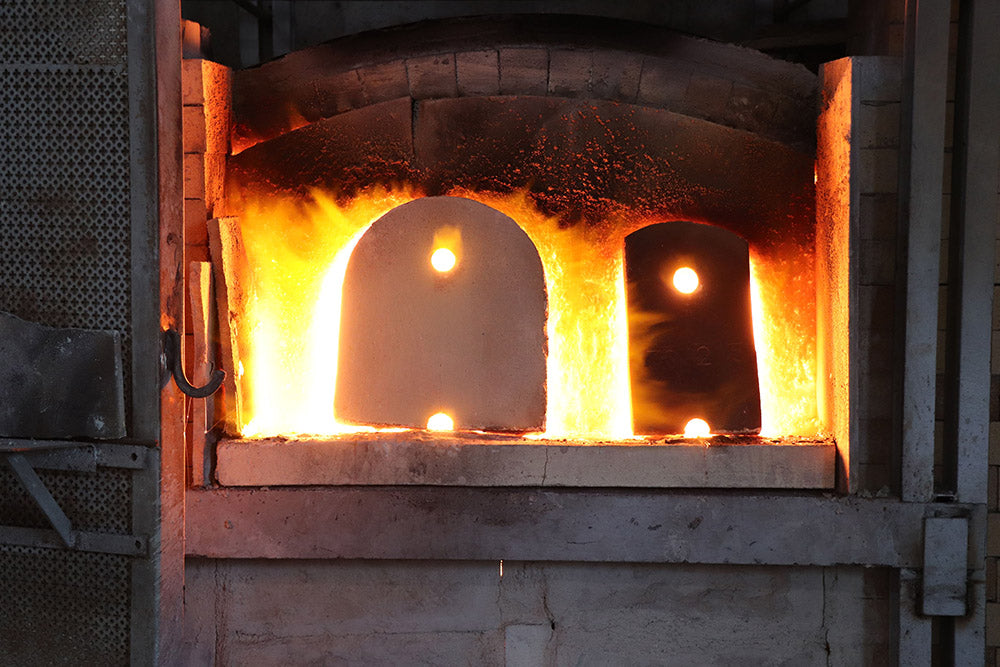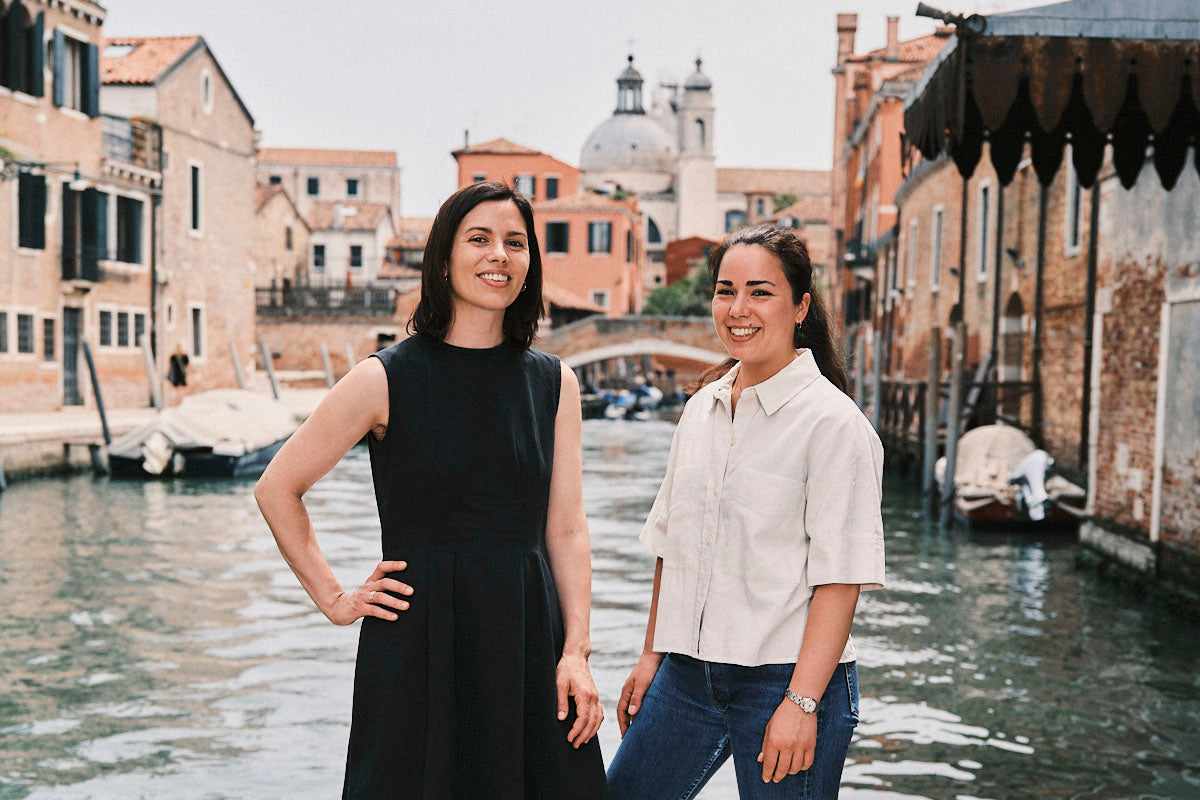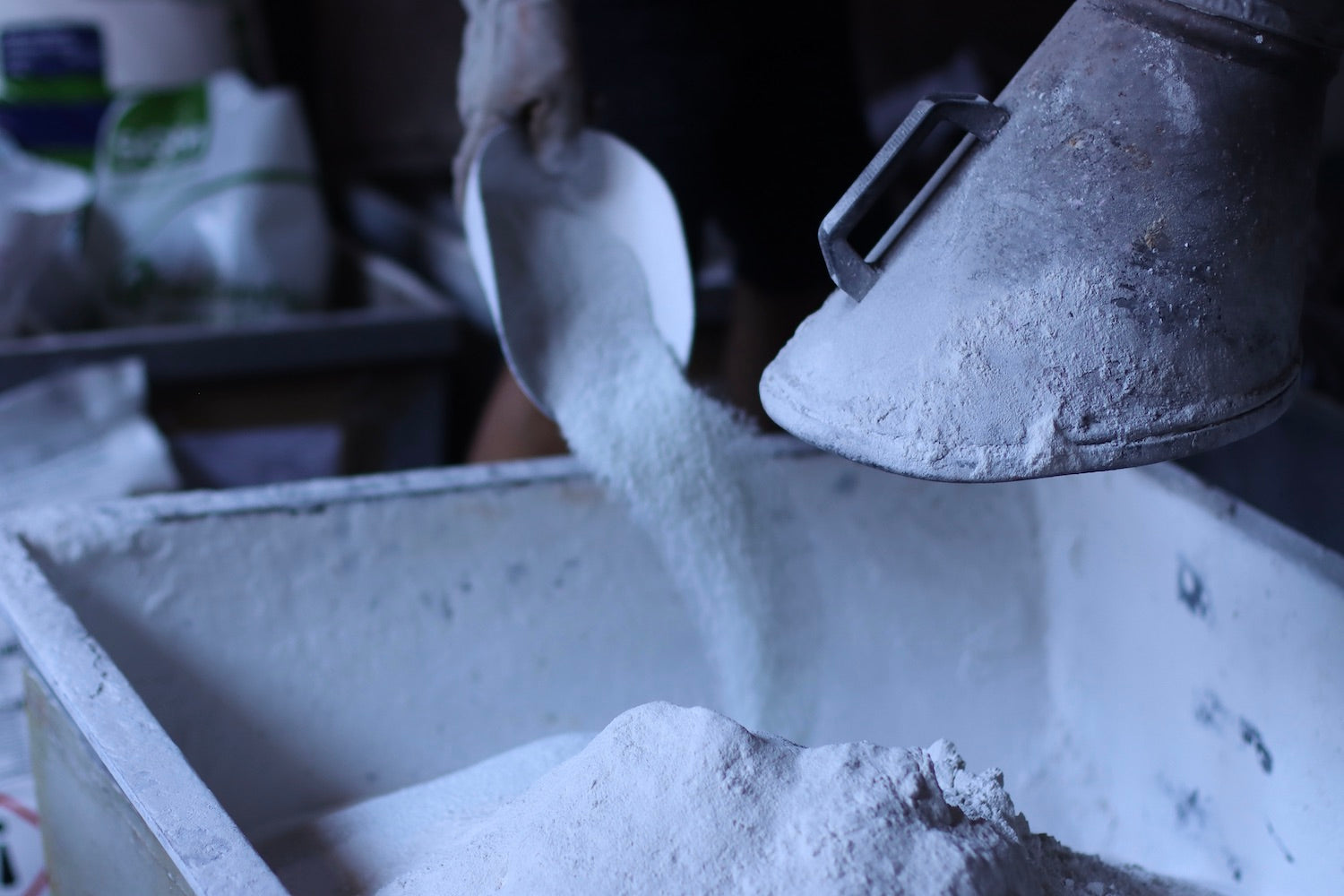In the previous chapters of our diary, we shared many glimpses of our lives and work. We decided to dedicate this chapter to the island of glass, Murano, where glassmaking transcends the craft and takes a magical form by merging tradition with creativity.

Murano is an island on the Venetian lagoon renowned for its centuries-old glass-making practices and craftsmanship. It is no secret that the production of our glassware takes place in Murano. Today we are having a day trip to Murano to visit the furnace we work with, and we will you more insight into how our production takes place. We think it is particularly important to talk about Murano right now, so severely tested in these difficult times by the rise in the costs of gas. The day at the furnace starts at six therefore we are arriving in Murano early in the morning with our boat. The weather is cold and crisp for an early September day, you can see the tip of the boat cutting sharp waves over the lagoon. As we enter the furnace, we feel the hot air blowing from the ovens, instantly making our faces blush from the heat.

At the door, we are greeted by the staff who works there. Over the years we have had the privilege of getting to know them better, it would not be an overstatement to say that we are one big family at the furnace. We are offered coffee by our very Maestro - Andrea. When we visit the furnace we usually arrive with the planned production for the week and the first job of today is going over the details. Andrea has been working at the furnace for as long as we could remember and he is a very skilled craftsman. He is accompanied by his colleagues, who are turning on the ovens to prepare for today’s production. Glassmaking is an ancient tradition and it takes years if not decades to master it. Even though we visit the furnace on regular basis, our Maestro always finds new ways to impress us.

There is constant circulation at the furnace. We take place as we watch Andrea molding the glass on the pipe stick after heating it in the oven -which maintains a 1000 to 1500 degree heat- then adding more glass to repeat the process. It is hard not to admire the gentle yet rough movements of glassmaking. Andrea starts to rotate the stick, then blows into the pipe and slowly inflates the glass. Two other artisans take turns to assist him, handing him various tools and holding the pipe stick for him while he is molding the glass. We are carefully standing next to them and observing every step of the process. It is important to note that glass is always red when it’s extremely hot. It only adopts its intended color once it cools down which can take days. For this reason, glass is placed in a final oven to gradually cool down once the shaping process is done to prevent shattering or any damage for the matter.

Once the glass is fully solid and reaches room temperature, cold carving could be applied to the glass. Cold carving wheels are usually made of stone however they are lined with diamonds which is the only material that is able to cut glass. This process further defines the shape and the design of the final object. This phase of production takes place in the Moleria, a separate area of the furnace away from the heat of the ovens. We have been using this technique for some of our vases for some time now. Today a couple of pieces are being carved in the Moleria while Maestro Andrea is molding glass into what will turn out to be one of our Sacco vases in the oven room. Production of Sacco does not require carving. The glass is shaped with the technique called free-hand.

The special touch that highlights the process of this very production is called: Iride which consists of making a surface iridescent, giving the glass a visual pearl-like effect. The chemical process starts while the glass is still soft and waxy. The Maestro puts the malleable glass above the metal fumes and a delicate patina envelopes it while he gives the glass its final shape. The final product obtains an almost-opaque, sheer surface which allows the light to playfully dance on its curved edges. Our visit to the furnace reaches its end around the early afternoon. We take a moment to say goodbye to the team and we join them for a toast - a bit of a ritual after a good day’s work. As all of us are sipping prosecco and talking about the production of the day, we could not help but realize how the more we dived into glass experimentation, the deeper our relationship and understanding with our Maestro became.

Observing all these magical processes turn into something we always have dreamed of thanks to these incredible artisans and their craftsmanship is simply outstanding. We are lucky enough to work in Murano, the center of glassmaking unmatched in the world, to collaborate with the best artisans and seeing them in action is truly magical. For this reason, it is essential to learn from the true artisans of the tradition, and pass on their knowledge. What we can do on our end is to bring our vision, ideas, and energies to try to create something new, without ever losing sight of the origins and essence of the tradition.
We hope that you enjoyed this page of our diary and if you want to read more about our story stay tuned for the next chapter!




Leave a comment
This site is protected by hCaptcha and the hCaptcha Privacy Policy and Terms of Service apply.